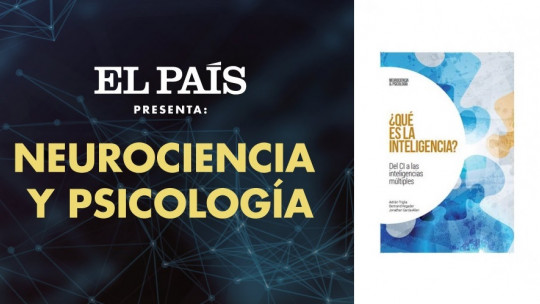
Monographs are documents that are aimed at describing, deepening or exposing opinions on a specific topic, without going too far into the bush or touching on parallel topics.
They can be written by as many people as they want, and their length can be as long as the topic being discussed allows. The important thing is that they are systematic, complete and extensive works on the topic that you want to make known and comment on.
Next We will see several examples of monographs a brief comment on each of them and, also, we will comment on the main parts that every monograph must have.
15 examples of monographs
The monographs are documents, whether written by a single person or by several, in which a specific topic is presented for which pertinent information has been collected from different sources. This is the most used genre for the presentation of research, deep reflections and academic works in general.
Although it only talks about one topic, the monograph presents and addresses it from different points of view, trying to get the most out of it and provide the greatest amount of data to its readers, in addition to presenting the author’s opinions, perspectives and considerations.
Parts of the monograph
Regardless of its length, a monograph must be a systematic, complete and extensive work which contributes in some way to expanding and presenting a new vision of the original topic raised. It can be as long as the topic allows and the author wishes to expand, in addition to being structured into as many chapters as desired, however, the monographs follow the same structure.
1. Summary
Many monographs are preceded by a brief summary which offers the reader a quick and general overview of the content presented in the work, in addition to being accompanied by keywords that identify the main themes.
2. Introduction
The introduction is the part of the work that provides the reader with the conceptual tools necessary to address the research topic that is going to be presented. This part It allows the reader to know the context and the ideas that are required to really understand what is explained in the monograph In addition, it can provide methodological and bibliographic information that is important to be acquired before going into more detail.
3. Development
The development is the main part of the monograph and It consists of all the chapters in which the material or topic presented is explored in depth addressing the research topic from different perspectives and trying to cover all the points, opinions, current situation of the issue in an organized manner.
4. Conclusions
In the conclusions part The investigation is closed, giving the reader the possible answers found after reading the work The ideal is for this part to function as an extensive summary of everything that has been presented in the monograph, but it also provides a final perspective or reflection that marks the reader in one way or another once all the arguments have been explained. personal motives and interpretations of the author or authors of the work.
5. Bibliography
The bibliography is the section in which the bibliographic references used by the author to prepare his monograph are shown. Here you can read the titles of other monographs such as articles, theses and final degree projects, as well as books, audiovisual materials and other sources of reference. It is an important part of the job, since It helps the reader to consult the works from which the information presented in the material that has just been read comes from allowing you to delve deeper into the topic.
6. Annexes
The annexes part is a section that, although not always present in a work, is quite useful. It exposes all the graphic, photographic or illustrative material that has been mentioned throughout the entire development of the text and that, due to space issues, has not been able to be presented to its fullest extent in the body of the monograph. In the annexes section We have these documents organized to facilitate their consultation after having read a specific paragraph in the text that mentions them.
Some examples of real monographs, explained
Below we are going to see the titles of 15 examples of monographs on all types of topics, in addition to briefly explaining what they are about.
1. Contribution of the slogan ‘firm hand, big heart’ to the triumph of Álvaro Uribe Vélez’s political campaign for the Presidency of the Republic of Colombia in 2002
This monograph seeks to demonstrate how the slogan used in Álvaro Uribe’s political campaign, “Firm hand, big heart,” earned him the presidency of Colombia in 2002, since it is an example of the application of the classic commercial marketing formula. This work analyzes this formula and relates it to the political value, the simplification of a short but powerful message that, being simple, is easy to capture by the audience to which it is directed and facilitates their adherence to the political campaign. .
Added to this, this work Its main contributions are reflection on the characteristics that make a slogan effective and how this can contribute to something as seemingly unrelated as marketing allowing us to win the presidency of a country.
2. Islamic fortification in the upper Duero versus Christian fortification in the upper Duero
This monograph describes and exposes the theories about the architectural style practiced between the 9th and 11th centuries in the upper Duero, a period that includes the end of Roman influence on the art of the region, succeeded by the Islamic and later replaced by the Christian, a sign of the change of political powers and social hierarchies that occurred in the territory. This work exposes What was the construction of buildings like during two centuries in which cultural exchange and enrichment was very present
3. Prescription of Antibacterials at the Santa María Health Post
Infectious diseases have been that invisible enemy that has caused the death of millions of human beings throughout history. The discovery of antibiotics led to the defeat of this enemy, making death due to microorganism infections a part of the past. Despite this, The “antibiotic pax” that many scientists claimed to have achieved was ruined with the surprising spread of a new disease which, today, has no cure: AIDS.
Infectious diseases have not been eradicated and, in fact, the situation looks set to get worse. Antibiotic resistance is a widely studied phenomenon, something that will make our medicines today not work in the future. That is why it is necessary to learn more about how these antibacterial drugs work, delve into the current panorama and discover what alternatives the scientific community proposes, something that is explored in this monograph.
4. Youth and Information Technologies within the framework of the United Nations
This monograph on youth and information technologies (ICT) is a document that offers data on the current situation of young people in the Basque Country in relation to access to this type of technologies collecting reports prepared by the United Nations in its commitment to promoting the management and greater democratization of ICTs, placing special emphasis on the most disadvantaged young women.
5. Bullying among peers
This document is a description of the history, definition, types and perspectives of bullying, what causes it and what consequences it entails, in addition to proposing prevention measures to prevent this phenomenon from occurring among young schoolchildren. To do this research, Its authors conducted interviews with different education professionals and educational psychologists with the purpose of knowing how the intervention of this problem is at the educational level.
A bibliographic search was also carried out that has been collected with the intention of letting parents, teachers, students and institutions know about this problem, so that they become aware and take measures to detect and prevent it. It is essential that parents improve communication with their children and that institutions develop strategies to foster a more favorable school environment for their students, based on respect and understanding.
6. Study for the implementation of cultural tourist attractions in the Barranco de Cuenca
This work recognizes and exposes the tourist potential of the Barranco de Cuenca (Ecuador) but it also raises awareness of the lack of activities and the need to promote it for tourism. This monograph raises the possibility of implementing a cultural offer in this region and, to this end, some relevant concepts related to the field of tourism are analyzed and valued with the strengths of the Barranco.
Through this work it has been possible to find out what cultural activities are preferred by tourists in the region, what specific places would be the most appropriate to carry out such activities, what days of the week it is most convenient to organize them, the time of day , the necessary facilities… Finally, after obtaining various data, the monograph closes with a proposal for adaptation and execution of the cultural activities in addition to including in the annexes the cartographic map of the project.
7. Comprehensive health care model. Contribution from the practice of family and community medicine residency
This monograph presents a model of comprehensive health care with a practical system based on the biopsychosocial approach of the individual, aimed at both the healthy population and those with pathology and that incorporates special emphasis on the dimension of prevention. His work highlights the importance of health, both as a right and as a public good which is built and developed throughout daily life.
The work in question describes the activities carried out by the residents of Family and Community Medicine in San Antonio (Uruguay) during the period 1999-2001, based on the principles of a comprehensive health care model. This monograph aims to reflect on the changes that are possible to introduce in the health care of a community based on the practical incorporation of the theoretical foundations acquired during that training period.
8. School coexistence: a necessary, possible and complex task
This monograph highlights several issues about promoting coexistence at school This is an issue that requires consideration, taking into account various factors and aspects that affect the development of student interactions, awakening different action plans. The idea expressed in the work is the need to establish a system of school coexistence that allows accompanying the growth of children, adolescents and young people, promoting their development as future citizens.
Also mentioned is the fact that in practice many educational institutions apply a coexistence system with difficulty, since this is neither an easy nor simple task and the educational projects designed for this objective end up being suspended, abandoned or postponed. The author of this text is interested in exposing and developing some reflections on this issue, in addition to sharing his proposals.
9. Contemporary Mexico
This is an individual study on contemporary Mexico, explaining the social, cultural and economic changes that occurred during the forty years that comprise the period 1970 -2010. In it It explains how the passage of time has motivated changes in different actors and structures of modern Mexican society, increasing some social sectors, harming others and changing the social fabric. Topics such as school dropouts, the “NEET” phenomenon, the creation of new companies and the brain drain abroad are addressed.
10. How does the creation of the “kibbutz” impact the origin of the State of Israel between the years 1900 and 1948?
This monograph addresses the ideological origins of the current State of Israel as a project still emerging at the beginning of the 20th century. The history of Israel and Palestine begins in 1880, when the Jewish people sought their own territory. After the end of the First World War, Great Britain took control of Palestine and prepared it for future independence, an idea that was hindered by the appearance of the “kibbutzim”, organizations led by the Zionist movement that had the clear idea of establishing the State of Israel in Palestine, as its holy nation was historically conceived.
These organizations managed to buy land, economically dominate the region, promote Jewish immigration and instill some Zionist sentiments in the British, promoting the increasingly shared idea that this land was more typical of the Jews than those who already lived there, the Palestinian Arabs. Although in 1947 Great Britain proposed the creation of two states, Israel and Palestine, in 1948 political interests imposed the creation of only Israel and left the Palestinians landless.
11. What musical elements present in Black Sabbath’s first two albums determine the creation of the heavy metal style?
This interesting work addresses the problem of defining heavy metal from a purely musical point of view The monograph focuses on searching for the most primitive origins of the style and leads to the style of a specific band: Black Sabbath, considered the creator of this style or, at least, the one that “standardized” it, being their first album. , named the same as the band, which laid the foundations of this musical trend.
The work questions and delves into the characteristics of the group’s first two albums as those works that could be considered what has served other heavy metal groups to have a style reference and compose their music using universal criteria of the genre. to the compositions that can be found on these two albums. The work considers that this style draws heavily from blues and learned music.
12. The economic aspects of tobacco and tobacco control
Tobacco continues to be a serious cause of death in the developed world and a serious public health problem, with economic, political, social, cultural and biomedical implications. These factors have been taken into account when designing interventions to control tobacco and prevent its consumption This monograph examines the economic aspects of tobacco control, reviews the scientific evidence on the current scientific basis of its impact on health, the economic problems it entails from when it is grown to when it is sold, and the policies implemented to prevent its use. consumption.
13. How does the creation of unconventional promotions influence the attraction of new customers and the maintenance of sales at the Porto Café restaurant?
This research describes the particular case of “Porto Café”, a micro-business founded in 2010 in Guayaquil, Ecuador by chef Carmen Alvarado.
The objective of this establishment was to be a viable job, where breakfasts, lunches and typical Peruvian dishes were offered, being the specialty of the establishment. However, due to problems with the location of the establishment, The company has been losing customers and it has been necessary to change marketing strategies This monograph focuses on what strategies have been applied to change the fortunes of the “Porto Café”
14. Methods for measuring unattainable heights using Trigonometric Ratios, the Law of Sines and the Law of Cosines
Trigonometry is the mathematical knowledge that focuses on studying the relationships between the angles and sides of triangles. This part of mathematics arose to be able to calculate heights and distances that with more manual techniques were either an odyssey or impossible. The objective of this work is indeed to evaluate different methods of measuring unattainable heights, based on angles and distances found in its calculation. A building is measured in different ways to then compare the results obtained by each method and define which is the most accurate.
15. The Congress of the Republic after 1991
This is a monograph that delves into the trends and strengthening of the Colombian legislative branch after the application of reforms and proposals presented in the Colombian Congress after the application of the 1991 Constitution Studying the legislative acts and defining more specifically what the author understands by “institutional strengthening”, based on the separation of the functions of political power, the expansion of functions and the generation of new conditions to control the internal balances of the government system.








